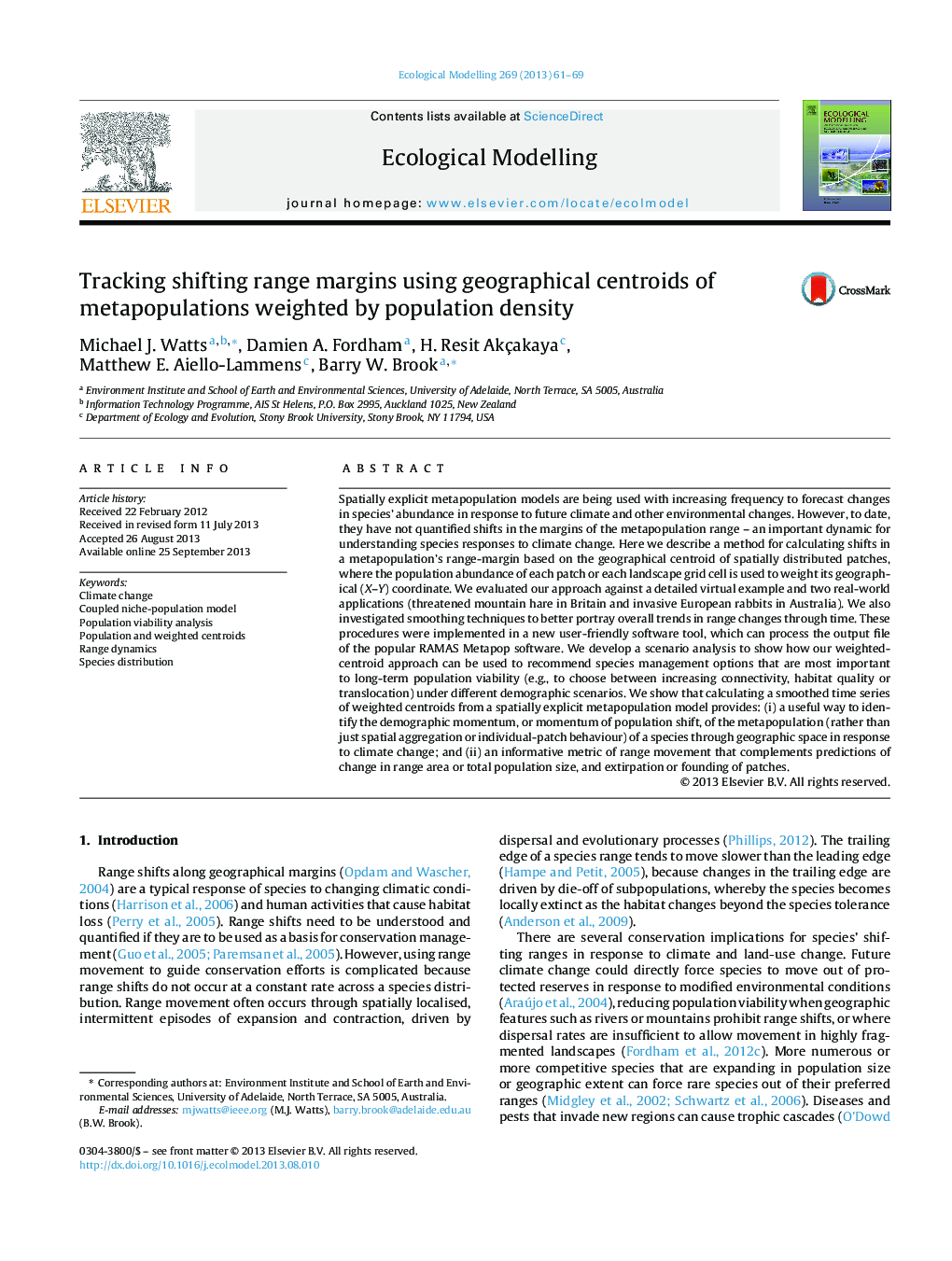| Article ID | Journal | Published Year | Pages | File Type |
|---|---|---|---|---|
| 4376044 | Ecological Modelling | 2013 | 9 Pages |
•Metapopulation range margin changes describe species response to climate change.•We tracked metapopulation range margins using weighted centroids of patches.•Weighting by patch occupancy yields useful time-series of range margin movements.•Tracking weighted centroids complements other measures of population viability.
Spatially explicit metapopulation models are being used with increasing frequency to forecast changes in species’ abundance in response to future climate and other environmental changes. However, to date, they have not quantified shifts in the margins of the metapopulation range – an important dynamic for understanding species responses to climate change. Here we describe a method for calculating shifts in a metapopulation's range-margin based on the geographical centroid of spatially distributed patches, where the population abundance of each patch or each landscape grid cell is used to weight its geographical (X–Y) coordinate. We evaluated our approach against a detailed virtual example and two real-world applications (threatened mountain hare in Britain and invasive European rabbits in Australia). We also investigated smoothing techniques to better portray overall trends in range changes through time. These procedures were implemented in a new user-friendly software tool, which can process the output file of the popular RAMAS Metapop software. We develop a scenario analysis to show how our weighted-centroid approach can be used to recommend species management options that are most important to long-term population viability (e.g., to choose between increasing connectivity, habitat quality or translocation) under different demographic scenarios. We show that calculating a smoothed time series of weighted centroids from a spatially explicit metapopulation model provides: (i) a useful way to identify the demographic momentum, or momentum of population shift, of the metapopulation (rather than just spatial aggregation or individual-patch behaviour) of a species through geographic space in response to climate change; and (ii) an informative metric of range movement that complements predictions of change in range area or total population size, and extirpation or founding of patches.
